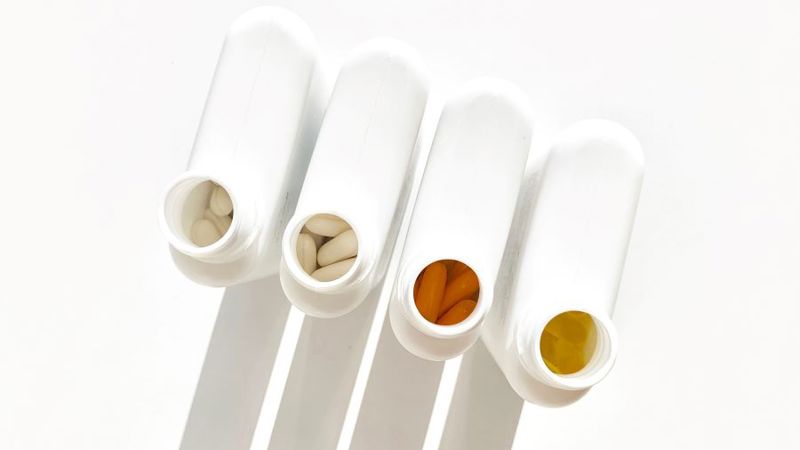
The inherent vagaries of health make uncertainty a constant for the National Health Service (NHS). The UK’s largest employer with 1.7m staff, the NHS is a vast and complex patchwork of organisations with an annual budget of over £150bn, or around 7% of the country’s GDP.
Its managers, clinicians and advisers are used to handling uncertainty, from estimating the number of people likely to turn up at emergency departments, to determining which innovations in medical technology to take up, to anticipating the consequences of current health trends. But COVID-19 has presented them with what is perhaps the publicly funded system’s greatest challenge since it was created in 1948.
As the outbreak spread, the NHS had to cope with an influx of seriously sick patients and to work out how best to treat this novel and potentially deadly virus. In the early stages, NHS bosses and their political masters warned of the very real possibility that hospitals would be overwhelmed. “Protect the NHS” was more than a slogan for Prime Minister Boris Johnson and his ministers. For the NHS, it was an operational imperative.
Even as some services return to a ‘new normal’, the NHS faces some big unknowns. No one knows whether there will be a second wave of the virus, or where or how serious it might be. The prospects for an effective vaccine or treatment are still uncertain, and even if one emerges, so too are the timing and speed of possible roll-out. The potential for other viruses or unexpected changes in health (e.g. from increased globalisation, climate change, terrorism or other causes) further adds to the uncertainty facing those running the NHS.
In the face of these unknowns, which are almost entirely beyond its control, how should the NHS go about managing uncertainty? Might the NHS be able to learn lessons from other sectors?
Option 1: More resources
Faced with uncertainty, the simplest response – albeit not always the most cost-effective one – is to throw more resources at the problem. This is what the NHS has done, particularly in the early stages of the pandemic. The main elements of its rapid response included:
- Nightingale hospitals. To add extra critical care capacity during the pandemic and to treat those with COVID-19, the authorities swiftly built a number of temporary hospitals around the country.
- The NHS commandeered – and paid for – capacity in private hospitals.
- The government launched new test and trace procedures to try to contain the spread of the virus.
- The UK joined the global rush to procure emergency medical kit, notably ventilators, as well as vast quantities of personal protective equipment (PPE) such as masks, visors, gloves and gowns.
Of course, there are economic and political limits to how long you can keep running the money taps full on. And the point comes when money isn’t enough. Some medical gear might not be available at any price, as the UK and others found with ventilators and PPE, while staffing limits (e.g. nurse shortages) cannot be solved quickly even with considerable sums of money.
Option 1, therefore, is usually a stop-gap resort. Unless the virus miraculously goes away or we develop herd immunity, the NHS needs to consider alternative ways to deal with uncertainty.
Option 2: Use resources more intensively
If you can’t add resources, the next best thing is to make more intensive use of what you already have. That’s what the NHS has done with its hospitals. Unoccupied space and offices have been repurposed for clinical use so more patients can be cared for. In the same vein, there are plans to extend the hours of some operating theatres and diagnostic departments, e.g. imaging, so more people can be treated each day.
Other sectors have long taken this approach, which can be particularly useful in times of flux when the timing of a transition from one state to another is deeply uncertain. In telecoms, for example, digitalisation and rapid technological progress have rendered the useful life expectancy of hardware and infrastructure unknowable. In such circumstances, it makes economic sense to get the most out of your existing kit while constantly assessing the benefits of alternatives, rather than continually scrapping what exists.
The NHS might be able to sweat its hospitals, clinics and medical equipment to the maximum, but not its human resources. Push doctors, nurses and wider staff beyond their physical and mental limits and the risk of making life-endangering mistakes will increase.
Option 3: Use resources more flexibly
Faced with uncertainty, a third option is to get creative. Deploying existing resources flexibly allows an organisation to respond nimbly to changing circumstances. Thus hospitals have quickly retrained ward nurses so they can operate intensive care equipment. The NHS has also created ‘COVID-clean’ sites with strict inbuilt anti-infection protocols. For example, because these sites are typically used for planned procedures, the NHS can require patients to self-isolate for several days before their treatment. On other sites, such as emergency rooms where patients by definition show up unannounced, the task of protecting against the virus is more difficult.
In the longer term, such flexibility may be increasingly built into the design of new or reconfigured services. After the trauma of COVID-19, every NHS trust will need a ‘surge capacity’ plan.
Security of supply has long been understood in other sectors, for example in electricity generation. Healthcare isn’t the same as electricity, but there may be some parallels. First and foremost, both have demand-side and supply-side levers which regulators and providers can pull in order to better manage uncertainty within the system.
For example, many big users of electricity, such as large manufacturing plants, have special energy contracts that allow the National Grid to turn their power off at a moment’s notice so it is available to cover a surge in demand from other consumers.
Perhaps the NHS needs something similar, whereby certain services (e.g. for low-risk, non-urgent patients) in certain locations could be rapidly re-scheduled (‘switched off’) and the capacity made available for the immediate urgent need. That is , in part, what happened in a haphazard way this time around – a more systematic approach would help next time. This raises lots of interesting questions, including – from an economist’s perspective – how the patient and the provider of these services should be fairly reimbursed (not necessarily financially) for being ‘on standby’ and how the NHS should choose which of those on standby to call upon.
Option 4: Innovation and reducing uncertainty
All of the above options are essentially workarounds that seek to minimise the disruption or damage caused by uncertainty. Clearly, it would be better to reduce the degree of uncertainty in the first place. The best strategy for doing so is likely to involve innovation.
Against COVID-19, the dream innovation would be the discovery and widespread use of an effective vaccine. Until that day, there are other ways in which the NHS can innovate to mitigate uncertainty.
- Switching to digital appointments. Telemedicine is likely to play a bigger role even after the virus is defeated.
- Adopting advanced forms of targeted treatment that require fewer hospital visits. For instance, the pandemic has accelerated the use of CyberKnife, a cutting-edge robotic radiotherapy treatment performed in fewer sessions than previous treatments, enabling fewer patient visits to the hospital.
- New patient pathways and procedures to reduce personal contact. The NHS has redesigned its outpatient clinics so that the crowded doctor’s waiting room – a potential Petri dish for the virus – is a thing of the past.
The NHS might also look farther afield for new ideas. To galvanise innovation, it could follow the lead of other sectors and make greater use of one-off competitions, awards and remuneration. Rolling pilot schemes could be a handy way of testing new care models.
Innovation is, of course, a priority for most industries. For example, UK Water Industry Research, alongside all 19 UK water companies, recently published its long-term Water 2050 Innovation Strategy. Many of its major themes – such as building resilient infrastructure and understanding future customer demands – are aimed squarely at reducing the impact of uncertainty in the sector.
Such long-term thinking should be equally important in the NHS. As NHS England embarks on a major capital investment programme, NHS trusts and their architects need to consider how to make their new hospitals resilient enough so they are still fit for purpose decades hence. This might well entail planning for fewer face-to-face appointments and anticipating the need to be able to quickly reconfigure parts of the hospital estate in the event of another pandemic.
Whether you run a lemonade stall or a multinational or the NHS, uncertainty is an unavoidable part of doing business. COVID-19, a source of extreme uncertainty, might be with us for the foreseeable future and other unexpected events will affect our health. Innovation can help better equip us for uncertainty in the long run, but the lessons of the first phase of the pandemic suggest the NHS and its political masters will have to fall back principally on the first three sets of options outlined in this bulletin: it will need more resources and it will have to use them more intensively and more flexibly. Some successes to-date still leave much to be decided, not least the costs and benefits to patients and the wider public of alternative ways to balance those three options.





